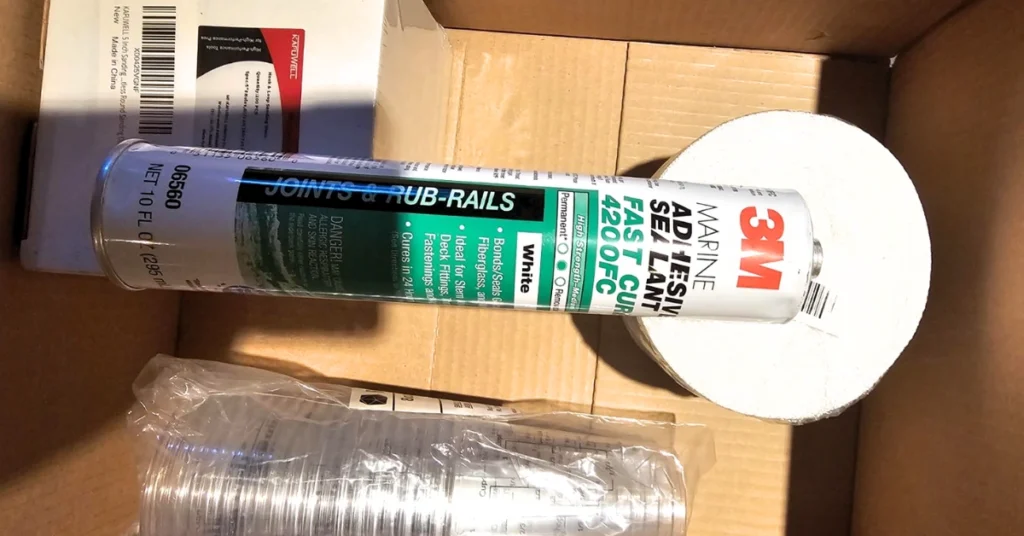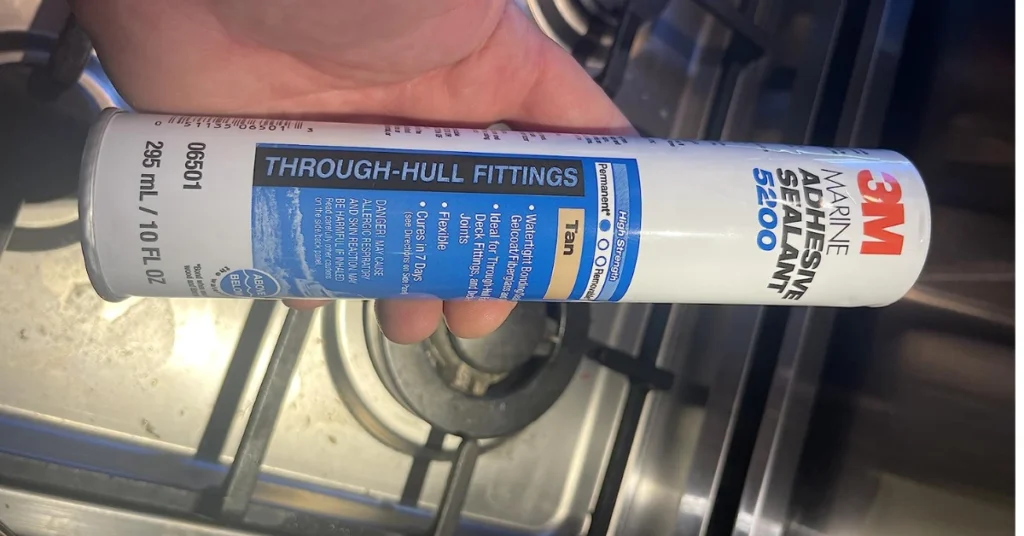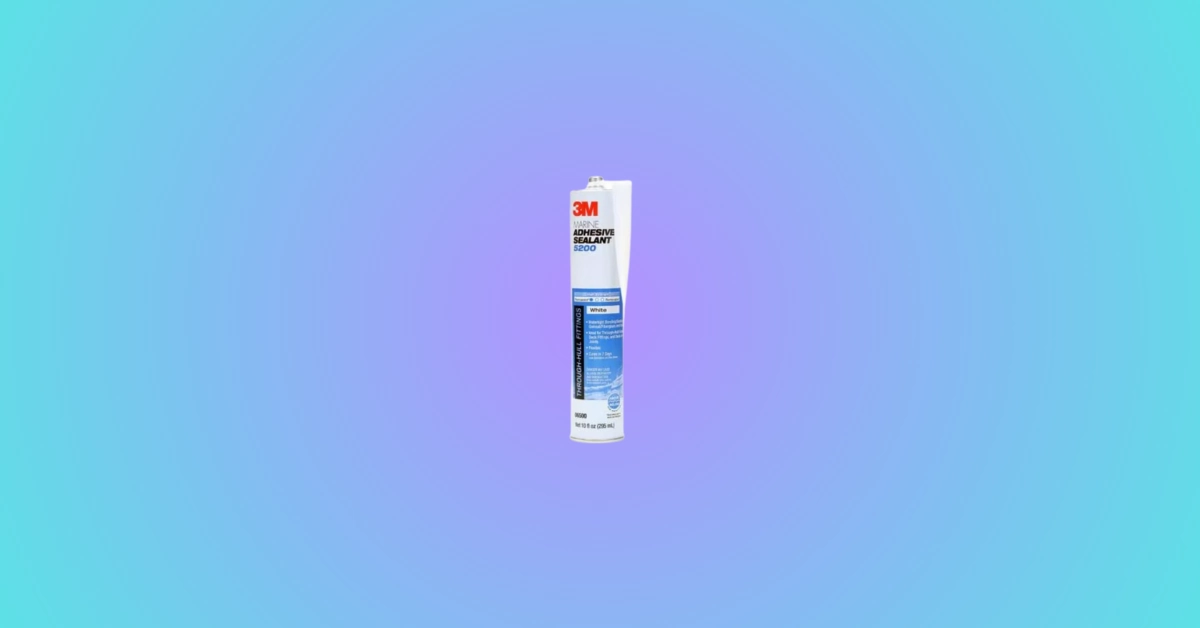I hear a lot of people saying that using either the 3M 4200 or 5200 sealant doesn’t make a difference. Suppose you say the same thing to others; hell with you because it isn’t true. When I compared the 3M 4200 and 5200, it became clear that both have more differences than similarities.
Both of these adhesives are water-resistant and reliable for sealing various removable parts. However, you can remove the 4200 even after several years, something you cannot do with 5200.
Now imagine how things can easily go wrong if anyone uses these glues thinking they are the same. Anyway, if you are here to find a more detailed explanation, please keep on reading until the end.
3M 4200 vs. 5200
The table above clearly shows that the 3M 4200 and 5200 differ in many aspects. To clarify this, let me break down the significant features in the following section.
For those curious about how the 4200 compares to the 4000, see our comparison of 3M 4000 vs. 4200.
Adhesive Type
The 4200 is a semi-permanent adhesive, which can be disassembled or removed. On the contrary, the 5200 is a permanent adhesive.
You can never remove it once you have used it to seal a part. Even if you try any removal method, you will damage the part.

Usage
Both 4200 and 5200 are suitable for sealing parts above and below the waterline. However, there is a slight difference.
While they both work fine, the 5200 offers a more effective bonding for parts underwater.
For example, the 4200 is more suitable for bedding, general interior sealings, deck-to-hull bonding, etc. On the other hand, 5200 works better on keel bonding, wood-to-deck areas, interior wood decks, anti-slip plates in the engine room, etc.
Saltwater Resistance
The 5200 can easily withstand salt water even if the part stays submerged longer. It can also withstand shock, vibration, and more.
The 4200 also does an excellent job of withstanding saltwater. But it is not as good as the 5200.
Color Option
I found out that the 3M 4200 comes only in two color options: black and white.
However, the 5200 comes in multiple color options, such as black, white, mahogany, etc.
Strength and Flexibility
Strength-wise, the 5200 is stronger, with a 700 psi tensile strength. This ensures the adhesive creates a stronger bond. However, the drawback is that it makes the glue more rigid and less flexible.
So, if you want a more flexible glue, 4200 is a better choice. However, it comes with a 300 psi tensile strength, which is not as strong as 5200.
Sanding and Painting
It is safe to sand or paint over both sealants. But I suggest waiting a good amount of time for the adhesive to cure properly before sanding.
You can also paint over the sealants without any problem.
Cure and Tack-Free Time
You can expect the 4200 to cure within 24 hours. But I won’t suggest expecting the same from the 5200, as it can take 7-10 days to cure completely.
The 4200 sealant begins to skin in 60 to 90 minutes. But in some cases, the 5200 has been found to take up to 48 hours.

Durability
The 3M 5200 is a permanent adhesive, so it is more durable. The 4200 lasts until you remove it, making it more suitable for replaceable hardware use.
Damage Risk
You can be confident about using and removing the 4200 adhesive. However, because the 3M 5200 is a permanent adhesive, you cannot remove it.
So, do not take anyone’s advice, believing that you can remove 5,200 sealants using hacks. Even that can cause permanent damage, so it is better to be safe than sorry.
Cost
The price of 3M 4200 and 5200 isn’t much different. Both sealants are quite affordable. However, the 4200 costs slightly less than the 5200.
Pros and Cons of 3M 4200
Pros
- Fast cure adhesive
- Very flexible
- Easy to remove
- Takes less time to skin compared to 5200
- Suitable for parts that are both above and below water
Cons
- Not as strong as 5200
- Not permanent
Pros and Cons of 3M 5200
Pros
- Creates a stronger bond
- Cures faster
- Stronger than 4200 adhesive
- More suitable for underwater parts
- Can withstand salt water, vibration, shrinking, and swelling.
Cons
- Takes too long to skin
- Comparatively more expensive
- Cannot be removed, or removal can cause damage
Conclusion
One common mistake is not reading the labels before buying or using adhesives. But you don’t have to do that now. After comparing 3M 4200 vs. 5200, it has become clear that they are unsuitable for similar purposes.
The 3M 4200 is more suitable for short-term fixes but more versatile. And the 5200 is your long-term solution. Its biggest flex is that it is resistant to salt water.


